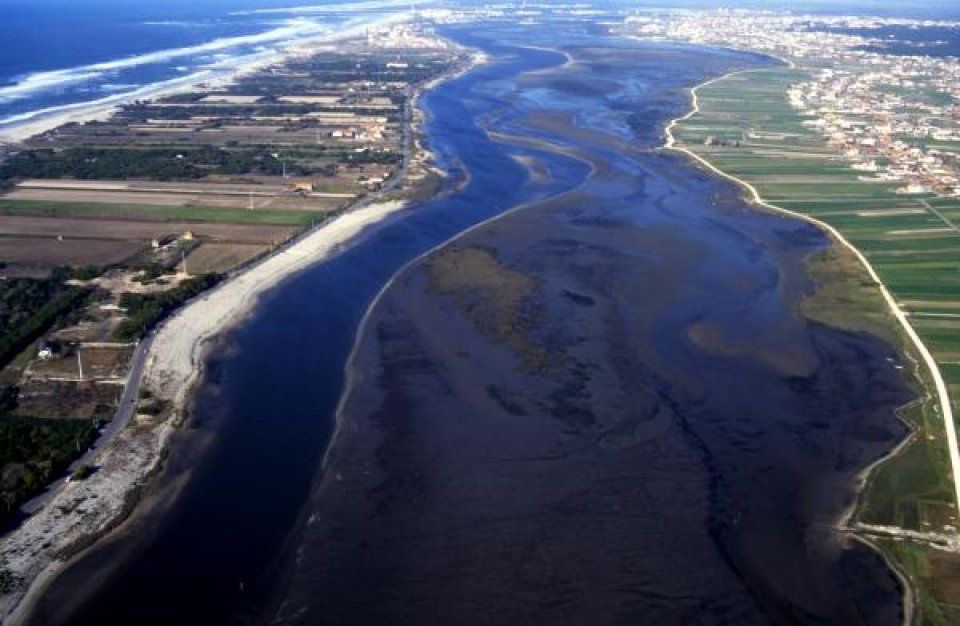
The case study area includes the downstream section of the Vouga river, the freshwater wetland Pateira de Fermentelos, the Vouga river estuary, which is part of Ria de Aveiro coastal lagoon and the adjacent coastal area. It includes several habitats integrated in the Natura 2000 network, meaning that this area contributes significantly to the coherence of Natura 2000 and/or contributes significantly to the maintenance of biological diversity within this biogeographic region. This site contains one of the largest freshwater lakes of the Iberian Peninsula with a mosaic of wetland habitats, reed beds and marshland as well as riparian vegetation. The confluence of the Vouga river with Ria de Aveiro coastal lagoon forms an area of 3000 ha of low depth waterways, freshwater wetlands, salt-marshes, which is recognised as model of balance between human activities and wildlife.
Minimising the impacts of dredging and flood bank extension: In 2018/2019, in the Ria de Aveiro two management interventions will have negative unintended impacts on biodiversity: 1) a dredging programme to manage water flow and navigability in Ria de Aveiro coastal lagoon, and 2) the extension of a flood bank to stop surface saltwater intruding onto local farmland. The goal of this study is to apply adaptive management and minimise foreseen but unintended management challenges in a Natura 2000 protected area, which crosses fresh and marine waters, in the context of EU water and nature-related Directives.
We assessed the overarching policy plans, programmes, and objectives that manage biodiversity within the case study, as well as the key governance institutions. Stakeholders were engaged at different steps, contributing data, information, and their views so that we could understand the current and future situation, and how it might change under new management. Here, we used: i) models that assessed the risk to habitats caused by human activities; ii) stakeholder knowledge on the current state and trends of the environment and human activities in the Ria de Aveiro; and iii) the results of maps and modelling of the different ways stakeholders value the ecosystem and the goods and services it provides.
Recommendations were made for two scales, the entire Natura 2000 site and the Baixo Vouga Lagunar. We propose a plan to restore saltmarshes and seagrasses, harmonise monitoring across EU Directives, and incorporate stakeholders and integrate territorial management instruments to mitigate the expected, unintended impacts of the flood bank extension and dredging in the Ria de Aveiro Natura 2000 site. The restoration measures should be framed in the Sectoral Plan for Natura 2000 Network, which is the territorial management tool to implement Portuguese policy for conserving biological diversity.
This project is a Case Study under the Horizon 2020 project AQUACROSS, which builds on work undertaken in the previous pillars to develop concepts, practices and tools for better implementation of Ecosystem Based Management. This includes identifying and understanding the linkages between aquatic ecosystems and human well-being and identifying innovative management responses for aquatic ecosystems.
As part of the Horizon 2020 AQUACROSS project, the Case Study Ecosystem-based management plans was co-created with input from local stakeholders and policy-makers. To protect biodiversity, managers should consider climate change projections. For the successful implementation of the identified water and nature policies in places like the Ria de Aveiro Natura 2000 site, any actions need to ensure the involvement of users and landowners.
For further information about the project: aquacross@ecologic.eu
Case Study contact: Ana I. Lillebø, University of Aveiro, lillebo@ua.pt
